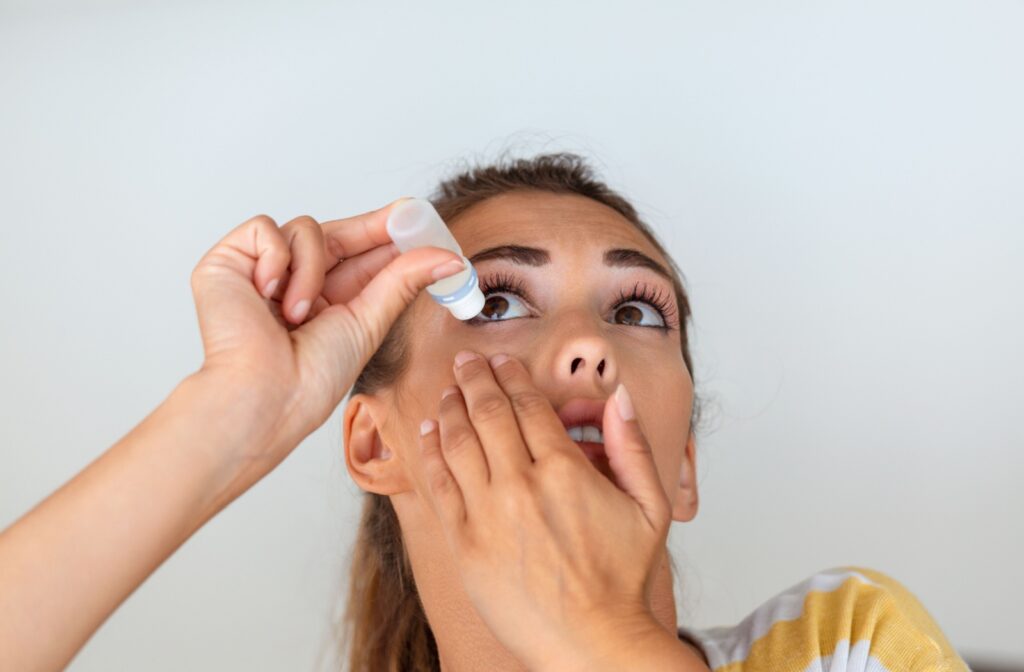Myopia, or nearsightedness, is becoming increasingly common among children and teens worldwide. Luckily, early intervention can make a meaningful difference in slowing its progression.
If you’re a parent concerned about your child’s vision, don’t worry! There are many ways to slow myopia’s progression in children and teens, including personalized myopia treatments, sunlight exposure, and corrective eyewear.
What Is Myopia & Why Does It Matter?
Myopia occurs when the eyeball grows too long or the cornea curves too much, causing light entering the eye to focus in front of the retina rather than directly on it. The result? Distant objects appear blurry, while near vision remains clear.
Myopia, or nearsightedness, is a rapidly growing global health concern, particularly among children and young adults. Currently affecting over 2.6 billion people worldwide, its prevalence is expected to rise to nearly 50% of the global population by 2050. Urbanization, increased screen time, and reduced outdoor activity are key contributing factors.
Myopia often develops during early school years and may worsen into early adulthood. While wearing prescription glasses or contact lenses can correct the blurry vision associated with myopia, it won’t slow down the progression. And this is where the real concern lies. High myopia significantly increases the risk of complications such as:
These conditions can lead to serious, irreversible vision loss. That’s why it’s critical to address progressive myopia early on.
What Is Myopia Control?
Myopia control takes a proactive approach to reduce the rate at which myopia worsens. Through specialized treatments and consistent care, the goal is not only to improve vision in the short term but to prevent long-term eye issues. Griffin Optometric Group’s Total Myopia program is a customized approach to managing and slowing myopia progression in children and teens.
Why Early Detection Matters
Children don’t always communicate vision issues effectively. That’s why it’s essential for parents to monitor for early warning signs of myopia, such as:
- Squinting frequently to see distant objects
- Rubbing their eyes or blinking excessively
- Complaints of headaches after tasks like watching TV or looking at the chalkboard
- Holding books or devices unusually close to their eyes
- Clumsiness or trouble catching objects
If you observe these symptoms, scheduling a comprehensive eye exam is the first step toward addressing potential myopia.
How to Slow Down Myopia Progression
Our Total Myopia program combines advanced technology and personalized care to manage myopia progression effectively. Here’s how it works:
Customized Treatments
Each child’s treatment plan is tailored to their unique vision needs. This may include soft multifocal contact lenses, low-dose atropine eye drops, or a combination of both.
Regular Follow-Ups
Total Myopia prioritizes long-term monitoring. Regular checkups help ensure your child’s eyes remain healthy and that the treatment plan stays effective as their vision develops.
Personalized Assessments
Evaluations focus on a child’s specific vision, health, and lifestyle to create a program that fits seamlessly into your family’s routine.
Maintenance & Lasting Results
By combining proven myopia management methods with regular follow-ups, the program helps achieve effective, sustainable results over time.

Myopia Control Treatment Options
The Total Myopia program offers innovative treatments designed for safe and effective outcomes.
MiSight Contact Lenses
MiSight contact lenses are FDA-approved, daily disposable lenses designed specifically for children aged 8 to 12. These lenses use ActivControl technology to simultaneously correct vision and reduce myopia progression. Studies have shown that MiSight lenses can slow the progression of myopia by approximately 59% when worn regularly.
Low-Dose Atropine Eye Drops
These medicated eye drops are used to relax the eye’s focusing mechanism, helping to alleviate fatigue thought to contribute to myopia progression. Administered in low doses, atropine provides an effective, child-friendly approach to myopia management with minimal side effects.
Sunlight Exposure
Exposure to natural sunlight may help slow myopia progression by stimulating dopamine release in the retina, which inhibits excessive eye growth. Spending at least 2 hours outdoors daily has been shown to reduce the risk of developing or worsening nearsightedness, especially in children and adolescents.
The Benefits of Slowing Down Myopia Progression
Here’s why managing progressive myopia is essential for your child:
Protects Long-Term Vision
Interventions aimed at slowing myopia progression reduce the likelihood of developing serious complications like glaucoma or retinal detachment later in life.
Improves Quality of Life
Better vision clarity means your child can perform everyday tasks more comfortably, whether it’s reading, playing sports, or engaging in screen-based learning.
Encourages Confidence
Children thrive when they feel capable and independent. Addressing vision concerns early can help foster their sense of confidence and academic performance.
Your Next Steps
When it comes to your child’s vision, the earlier you intervene, the better the outcome can be. If you suspect your child may have myopia, or you’ve noticed their current prescription getting stronger year by year, it’s time to explore myopia control options.
Griffin Optometric Group’s Total Myopia program makes it easy to give your child the care they need. If you’re concerned about your child’s vision book an appointment at our clinic today to learn more about our Total Myopia program.



